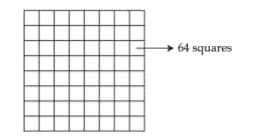If two of the 64 squares are chosen at random on a chess board, the probability that they have a side in common is
1/9
1/18
2/7
none of these
The correct Answer is:B
Step by step video, text & image solution for If two of the 64 squares are chosen at random on a chess board, the probability that they have a side in common is by Maths experts to help you in doubts & scoring excellent marks in Class 11 exams.
Topper's Solved these Questions
- BOOK - OBJECTIVE RD SHARMACHAPTER - PROBABILITY EXERCISE - Section II - Assertion Reason Type22videos
PROBABILITY
- BOOK - OBJECTIVE RD SHARMACHAPTER - PROBABILITY EXERCISE - Chapter Test45videos
PROBABILITY
- BOOK - OBJECTIVE RD SHARMACHAPTER - PROBABILITY EXERCISE - Section- II (Assertion -Reason Types MCQs)15videos
PROBABILITY
- BOOK - OBJECTIVE RD SHARMACHAPTER - PERMUTATIONS AND COMBINATIONSEXERCISE - Chapter Test60videos
PERMUTATIONS AND COMBINATIONS
- BOOK - OBJECTIVE RD SHARMACHAPTER - QUADRATIC EXPRESSIONS AND EQUATIONS EXERCISE - Chapter Test50videos
QUADRATIC EXPRESSIONS AND EQUATIONS
Similar Questions
Knowledge Check
- Question 1 - Select One
Two squares are chosen at random on a chessboard, the probability that they have a side in common is:
A332B132C1/18Dnone of these - Question 2 - Select One
Two squares are chosen at random on a chessboard, the probability that they have a side in common is:
A332B132C1/18Dnone of these - Question 3 - Select One
Two squares of 1×1 are chosen at random on a chestboard. What is the probability that they have a side in common ?
A1/18B64/4032C63/64D1/9
Two squares are chosen at random on a chessboard (see figure). The probability that they have a side in common is :
 View Solution
View SolutionIf nine squares are chosen at random on a chess board, find the probability that they form a square of size 3×3.
View SolutionOn a chess board if two squares are chosen at random, what is the probability that they haven't a side in common?
View SolutionTwo smallest squares are chose at random on a chess board and pq is the probability that they have exactly one corner in common (p and q are co-prime) then q−20p=
View SolutionTwo squares are choosen from a chess board. The probability that they are of different colour is
View Solution


